
© Francesco Squeglia. (Click image for larger version)
Rome Opera Ballet
The Sleeping Beauty
Rome, Teatro Costanzi
30 May 2014
www.operaroma.it
Roman Beauty
Finding myself in Rome for a few weeks, I decided to test the local waters and was happy to discover that the Rome Opera Ballet was performing Tchaikovsky’s Sleeping Beauty, with several casts. I chose a cast almost at random; it turned out to be led by two guests: the young Jurgita Dronina, a principal dancer at Het National Ballet, and Vladimir Shishov, first soloist at the Vienna State Opera Ballet. The company in Rome is currently under the direction of the Belgian-born Micha van Hoecke, who spent many years dancing for Roland Petit and Maurice Béjart. Most of the corps comes from the company school, which is trained using the Vaganova syllabus mixed in with some Cecchetti and other styles; two levels are taught by Cuban ballet masters, which may help to explain why most of the dancers in the company seem to be excellent turners.
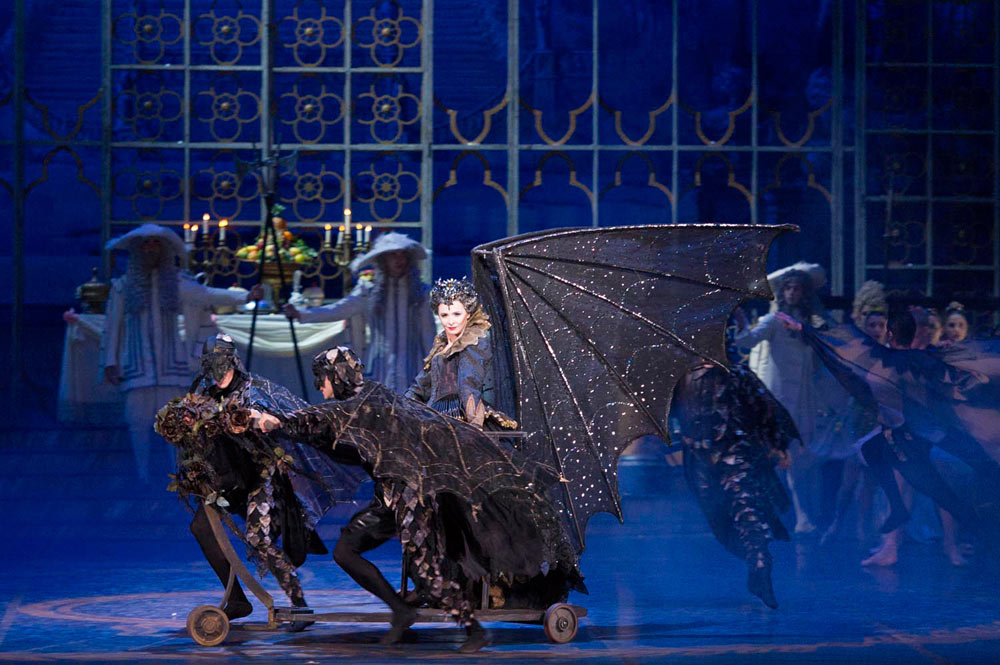
© Francesco Squeglia. (Click image for larger version)
Sleeping Beauty is a tricky ballet; in the wrong hands it can so easily become mind-numbingly academic and eternal (despite Tchaikovsky’s glorious music). Because of its extreme classicism – it’s practically a ballet about classicism – it also has a way of revealing a company’s weaknesses. The full Petipa version, which no-one ever does, is over four hours long. The Rome staging, created for the company in 2002 by the Canadian choreographer and director Paul Chalmer, comes in at a brisk three hours (including two intermissions) thanks, in no small part to the lively, crisp conducting of the British conductor David Garforth. Garforth certainly keeps things moving along. The orchestra, who plays for both the opera and the ballet, is better than most of the dance orchestras Stateside. At this performance, the musical lines were clear, the sound was vibrant, and individual soloists held their own against the dancing onstage.
On the downside, Maestro Garforth’s dynamics were sometimes over-loud, rather overshadowing the notes of delicacy and longing in the score. More contrast would have been nice. The Vision Scene in act two, in particular, lacked poetry. In many ways, this was true of the entire production, perhaps in part because it is a revival. It’s handsome and solid, but lacks the small details that make the story and the characters resonate fully. (The sense of anticlimax after the kiss made me long for Frederick Ashton’s awakening pas de deux, which I recently saw performed by the Sarasota Ballet.)
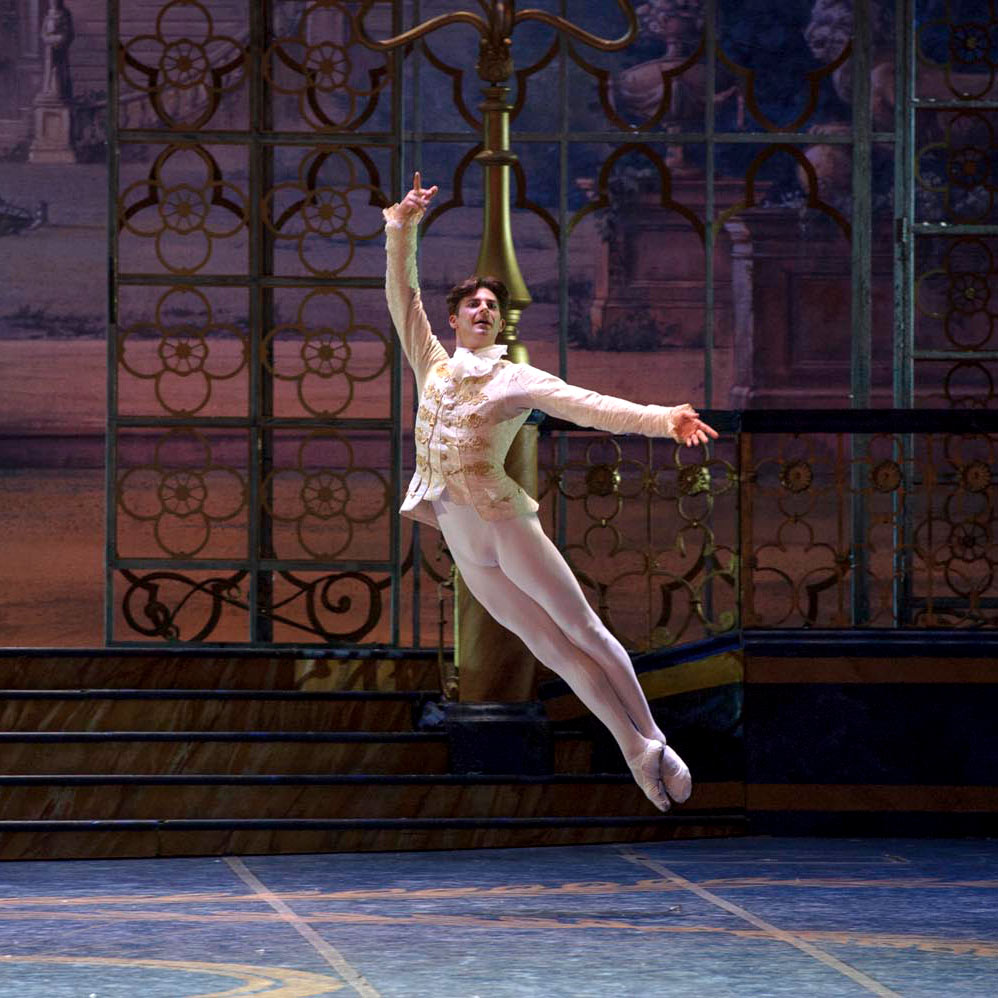
© Francesco Squeglia. (Click image for larger version)
The lack of urgency was true of both the production, which tends to shy away from characterization and mime, but also of the dancers’ interpretations. The lead characters – Aurora, Prince Florimund, the Lilac Fairy, and Carabosse – remain rather anonymous, standing in rather than fully inhabiting their roles. The vagueness extends to the sets and costumes, by Aldo Buti, which are attractive but change little from scene to scene, muting any sense of transformation.
Each tableau is dominated by a conservatory-like glass structure with a chateau and landscape in the distance. Does the christening take place inside or outside? And the birthday celebrations? Typically, the garland dance that precedes Aurora’s entrance is performed by flower-carrying locals outside the castle. Here, the men wore red knee-length coats with sashes, which seemed to indicate that they were courtiers. More importantly, Chalmer’s choreography for the Garland Waltz, one of Tchaikovsky’s most inspired passages of dance music, was bland, un-dancey.
All this aside, the company is certainly able to carry off a more-than-respectable Sleeping Beauty. The overall style seems to be very neat, a tad dainty, with soft elbows and silken port de bras. The hands are particularly lovely. The women are petite and light on their toes. In this performance, the fairy variations went off without a hitch. The Fairy of Playfulness, with her flickering fingers, was especially lively; her whole body seemed to bubble with happiness. As for the ensemble, their dancing was a little square, a little safe, and very vertical, lacking the suppleness that can make the ballet sparkle with warmth. The men looked like they could have used a few more rehearsals.
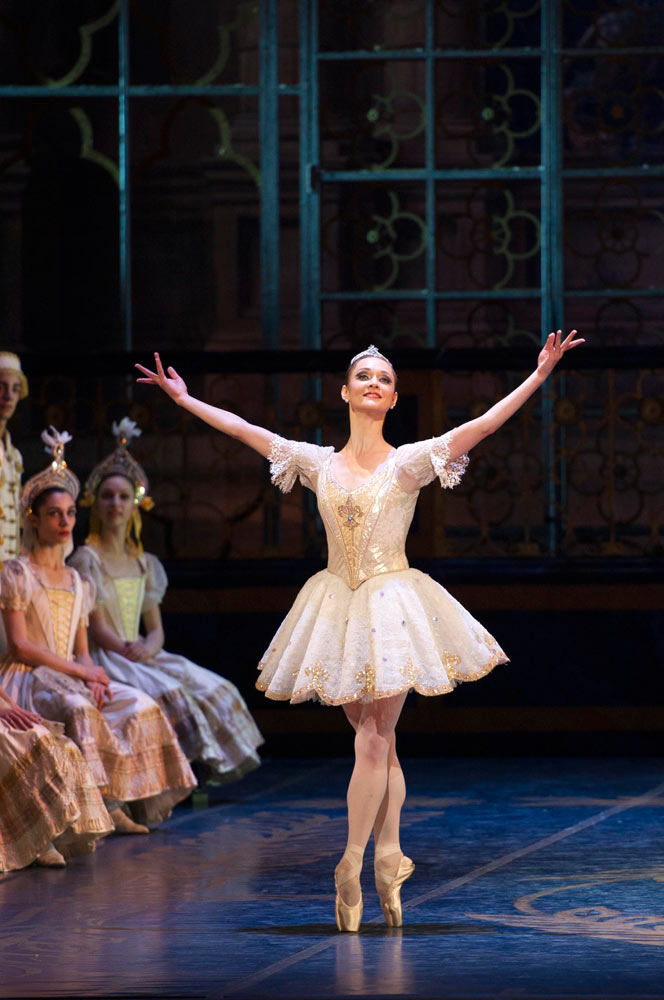
© Francesco Squeglia. (Click image for larger version)
Our prince, Mr. Shishov, seemed to be having an off night, wobbling and shifting visibly in the adagios, and letting his back leg sag in his circles of jetés. But he was handsome and elegant and an attentive partner. (His double tours were also very nice.) Ms. Dronina has the makings of a lovely Aurora. Her movements are unmannered and soft, and she has a broad face that glows in the light and big expressive eyes, with which she all too often looks down at the floor. Her balances in the Rose Adagio were relaxed. (She did only three balances the first time around, but they were beautiful, and she made up for this with extra long balances in the second round.) But as of yet Dronina doesn’t know how to make the balletic trick look like it means something. She has the general contours of the role, but now she has to imbue them with life. How is the first-act Aurora different from the one who appears in the prince’s vision, calling to him from a distant land? Or from the fully-realized woman in love in the final wedding pas de deux? These things take time, a vivid imagination, and good coaching.
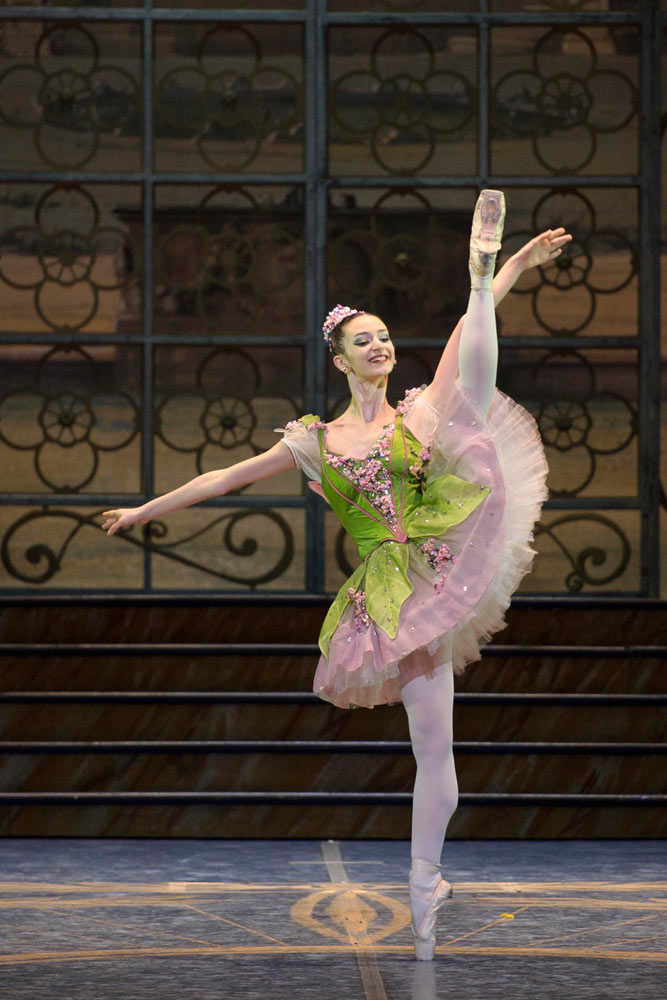
© Francesco Squeglia. (Click image for larger version)
In the US, Lilac Fairies tend to be tall, lush movers; they shift the air with their long legs and radiate authority and warmth around the stage. Marianna Suriano (in the corps) is tiny and more of a staccato dancer than I’m used to in the role, but her fluid, rippling port de bras sometimes gave her the appearance of hovering just above the stage. It was a lovely effect. The Bluebird pas de deux, always a highlight, was impeccably danced by Sara Loro and Alessio Rezza (both in the corps).
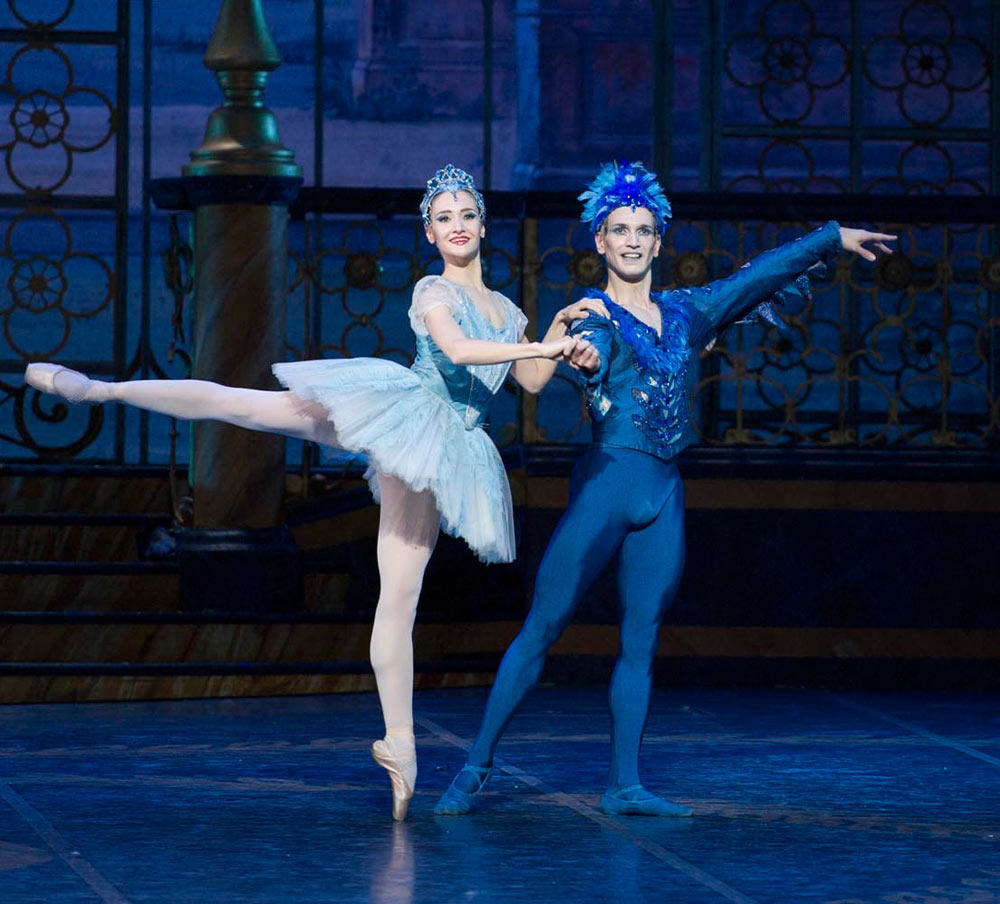
© Francesco Squeglia. (Click image for larger version)
But my favorite dancer of the night was someone in a minor role, the “Diamond” variation in the final act. Andrea Forza’s dancing had a dynamism, juiciness, and joyful attack that was lacking elsewhere in the evening’s performance. He ate up space, launching into a diagonal of jumps, his free leg carving the air in ronds de jambe. He was all muscles and momentum and movement. He was a mean turner, too. I’d wager he’ll make a nice prince someday.












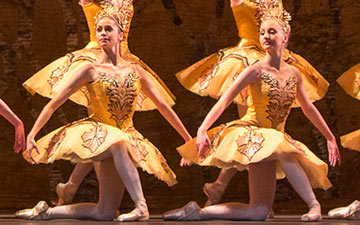
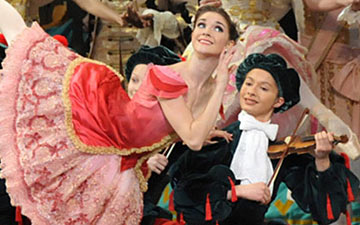

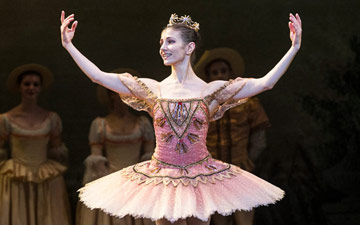
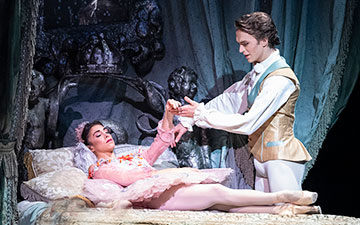
Dear Marina,
I enjoyed your review. It reminded me of an old experience at the very beginning of my love of ballet when I was seeing Sleeping Beauty (probably for the first time). Bluebird came flying out of the window, and that piece astounded me. I learned that it was Rudolf Nureyev, and I later learned that I had the fortune to see it the only time that he ever danced Bluebird. I was also told that he had done it because Nijinsky had also done it.
Best,
Barbara Thau
PS I am already on your list
Dear Barbara, what in incredible memory! What year was this, in what city?
Yours,
M
[…] I’m in Rome for a few weeks with my husband, who is singing at the opera here. (This explains why I haven’t been reviewing the ballet season in NYC!) I was lucky enough to have the chance to see Sleeping Beauty at the Rome Opera Ballet, with Jurgita Dronina of the Het National in the role of Aurora. It was a solid performance; not mind-blowing, but well-danced throughout. I had some doubts about Paul Chalmer’s production. It’s a bit vague, short on mime, and rather lacking in characterization. You can read my review, for DanceTabs, here. […]
Dear Marina,
Anyone, who was at that performance, would most likely remember seeing it!
I just noticed that you posted my comment about seeing Nureyev do the Bluebird Pas de Deux. (I had company staying with me, and she wanted to see as much of New York as she could, which gave me no time to read my emails.) I can’t tell you the year, that I saw it, because I do not remember it. I didn’t know until a few years ago that it was the only time he had danced Bluebird. It was at the Met in NYC.
I was waiting for the bus on Broadway after an ABT performance and began a discussion with another ballet lover. I mentioned my experience seeing the Nureyev Pas de Deux, and he said that he had seen it too. Of course I asked how he knew that he was at the same performance as I was. It was he, who told me that it was the only time that Nureyev had danced it.
I will never forget that performance!
Barbara